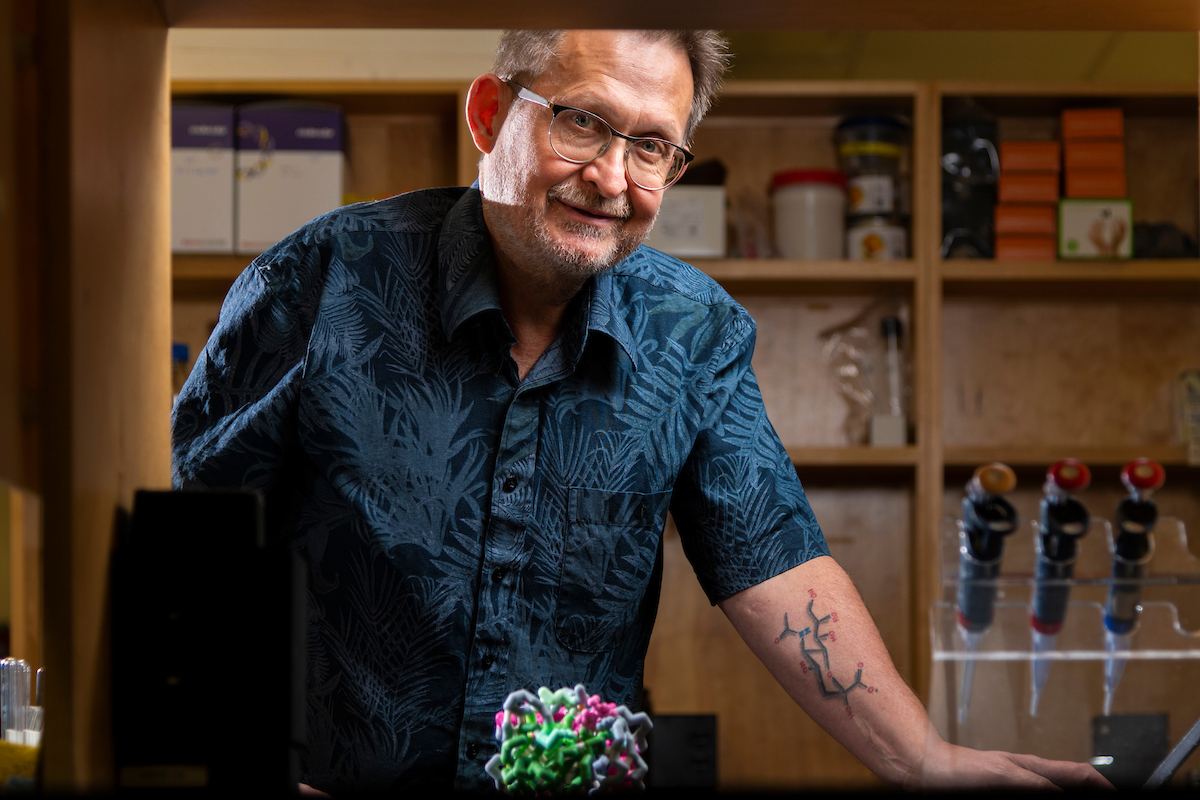
Warren Wakarchuk is a new professor in the Department of Biological Sciences, and an expert in the science of glycomics. Photo credit: John Ulan
New professor in the Department of Biological SciencesWarren Wakarchuk is using the science of glycomics to improve protein-based pharmaceuticals used in treatments for many diseases, including cancer.
Wakarchuk joins the University of Alberta following nearly 20 years at the National Research Council Canada and seven years at Ryerson University. He is also the new associate scientific director of the Canadian Glycomics Network (GlycoNet), a pan-Canadian Network of Centres of Excellence of more than 140 researchers, centred at UAlberta.
What brought you to the University of Alberta?
I was hired as the associate scientific director of GlycoNet. However, I have been interested in the excellent glyco-science that has been part of the U of A for the past 20 years, so it was not a hard sell to relocate here!
Tell us about your research program.
My research program looks at the biochemistry behind how organisms decorate individual molecules or whole cell surfaces with sophisticated signaling molecules known as glycans. Biological processes all the way up the evolutionary ladder depend on these signalling molecules so that cells can communicate important information-a field known as glycobiology.
Our bodies rely on this recognition system to detect pathogens, to monitor the immune system, develop tissues, repair wounds, and many other processes. This recognition system is giving rise to a new generation of medicines to combat infectious diseases, chronic diseases like inflammatory bowel disease and cancer. GlycoNet was formed to bring together Canadian expertise in glyco-science to provide solutions to health issues through glycomics and glycobiology. My own group is looking at how to use glycans to improve the efficacy of protein-based drugs, such as antivirals or cytokines for stimulation of white blood cell production in cancer patients.
What inspired you to enter this field?
When I started my independent work more than 20 years ago, it was a new field with much to offer someone starting out, and it has been very rewarding to see all of the developments that get us closer to real clinical applications.
Tell us about your teaching.
I have been teaching a glycobiology course since 2010, which links together biochemistry, cell biology and immunology for the perspective of the recognition system I mentioned. This type of course is essential to help students make sense of the connections which are often not spelled out in other courses. I like teaching this course because every time I do, there are students who see those connections and get really excited at this new level of understanding of how complex biology functions.